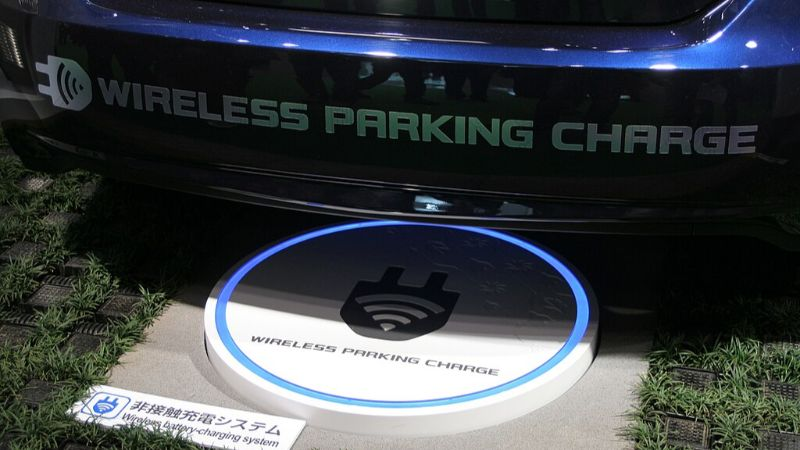In 2023, urban mobility is undergoing a transformative shift, thanks to the advent of wireless EV charging technology. Imagine driving your electric vehicle and charging it effortlessly without the need to plug in—this is no longer a futuristic dream but a present-day reality. According to a recent report by Bloomberg Green, wireless charging infrastructure is expanding rapidly, projected to grow at a CAGR of 23% over the next five years. This innovation is set to redefine how we think about electric vehicle (EV) infrastructure, making the urban landscape more efficient and congestion-free. In this article, you’ll discover how wireless EV charging is changing the face of urban mobility, understand the technology behind it, learn about the leading players in the field, and explore practical tips for adopting this revolutionary charging method.
Understanding Wireless EV Charging Technology
How Does Wireless Charging Work?
Wireless EV charging, also known as inductive charging, operates using electromagnetic fields to transfer energy between two coils: one mounted on the ground and the other fitted to the underside of the vehicle. This method eliminates the need for physical connectors, allowing for seamless energy transfer. The process is similar to wireless phone chargers but on a larger scale.
Advantages Over Traditional Charging
Wireless charging presents several advantages:
– Convenience: No more fumbling with cables or connectors.
– Safety: Reduced risk of tripping hazards and electrical faults.
– Durability: Less wear and tear on charging ports and cables.
– Efficiency: With ongoing technological advancements, energy transfer efficiency is nearing that of wired solutions.
Key Players and Innovations
As of 2023, several companies are leading the charge in wireless EV technology:
1. WiTricity: An MIT spin-off, WiTricity is pioneering magnetic resonance technology to improve efficiency and range.
2. Plugless Power: Known for its aftermarket wireless charging solutions, Plugless is expanding into OEM partnerships.
3. Electreon: Specializes in dynamic wireless charging that powers vehicles while in motion, particularly in public transport sectors.
The Impact on Urban Mobility
Reducing Urban Congestion
By integrating wireless charging pads into parking spaces and even roadways, cities can reduce the need for dedicated charging stations, thereby freeing up valuable urban space and reducing congestion. A study by CleanTechnica found that cities like Oslo and Los Angeles are already piloting such projects with promising results.
Enhancing Public Transportation
Wireless charging is not limited to private EVs. Public transportation systems, including buses and taxis, are increasingly adopting this technology. For instance, the city of Tel Aviv is testing Electreon’s dynamic wireless charging on its bus routes, which could potentially lower operational costs and reduce emissions significantly.
Practical Guide to Wireless EV Charging
How to Charge Wirelessly
- Installation: Ensure your vehicle is compatible with wireless charging and install a receiver coil.
- Locate Charging Spots: Use apps like PlugShare to find nearby wireless charging-enabled parking spots.
- Position Correctly: Align your vehicle over the ground pad for optimal charging.
Where to Buy Wireless Charging Kits
- OEM Options: Some EV manufacturers like Hyundai and BMW offer factory-installed options.
- Aftermarket Solutions: Companies like Plugless provide kits compatible with popular models like the Tesla Model S and Nissan Leaf.
Comparing Wireless Charging Providers
| Provider | Efficiency | Price Range | Availability |
|---|---|---|---|
| WiTricity | Up to 94% | $$$ | Global |
| Plugless Power | Up to 90% | $$ | North America |
| Electreon | N/A | $$$$ | Europe |
The Future of Wireless EV Charging
What Lies Ahead in 2024 and Beyond
The pace of innovation in wireless EV charging suggests a bright future. By 2024, it’s expected that more cities will embrace this technology, integrating it into urban planning to support sustainable transportation goals. The International Energy Agency (IEA) predicts that wireless charging could become a standard feature in EV infrastructure, much like Wi-Fi in public spaces.
Call to Action
Now is the ideal time for city planners, businesses, and consumers to invest in wireless EV charging technology. By adopting these solutions, we can collectively drive towards a more sustainable and efficient urban environment. Are you ready to be part of this wireless revolution?
In conclusion, wireless EV charging is not just a technological advancement but a significant leap forward in urban mobility. It offers unmatched convenience, efficiency, and safety, making it an attractive option for modern cities. As we move towards a greener future, embracing such innovations will be crucial in shaping sustainable urban landscapes. Keep an eye on this space, as the realm of possibilities continues to expand.

